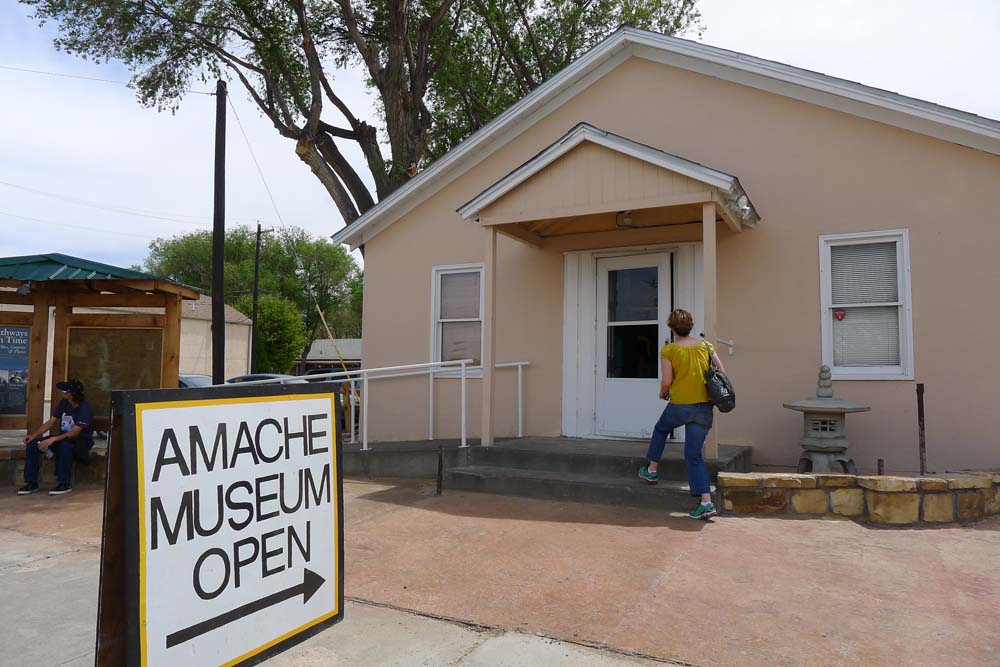February 18, 2014
When JAs say “camp” they’re not talking about summer camp
[caption id="attachment_5501" align="aligncenter" width="520"] The Amache Museum, a block from Granada High School, is managed by students from the school who take the "Amache Preservation Society" class. The students maintain the concentration camp site outside of Granada.[/caption]
It’s a rite of greeting among older Japanese Americans. I’ve seen it happen over and over – one JA is introduced to another, and if they’re old enough, the first question they ask of each other is, “what camp were you at?”
We all know that “camp” in the context of Japanese Americans has nothing to do with summer camp. These people are not being nostalgic about singing “Kumbaya” around the campfire, hopping along in potato sack races (maybe it would be rice sack races?) and learning how to “rough it” in the great outdoors.
“Camp,” of course, in the Japanese American context, are the internment camps, or as I increasingly call them, “concentration camps,” that 110,000 people of Japanese descent were held in during World War II. So an elderly man says he was in Arkansas, and the other man says “Oh yeah? Which one?” “Jerome.” Common ground is found, and the two reminisce, if that’s the right word, about their families’ unjust incarceration.
The Amache Museum, a block from Granada High School, is managed by students from the school who take the "Amache Preservation Society" class. The students maintain the concentration camp site outside of Granada.[/caption]
It’s a rite of greeting among older Japanese Americans. I’ve seen it happen over and over – one JA is introduced to another, and if they’re old enough, the first question they ask of each other is, “what camp were you at?”
We all know that “camp” in the context of Japanese Americans has nothing to do with summer camp. These people are not being nostalgic about singing “Kumbaya” around the campfire, hopping along in potato sack races (maybe it would be rice sack races?) and learning how to “rough it” in the great outdoors.
“Camp,” of course, in the Japanese American context, are the internment camps, or as I increasingly call them, “concentration camps,” that 110,000 people of Japanese descent were held in during World War II. So an elderly man says he was in Arkansas, and the other man says “Oh yeah? Which one?” “Jerome.” Common ground is found, and the two reminisce, if that’s the right word, about their families’ unjust incarceration.




